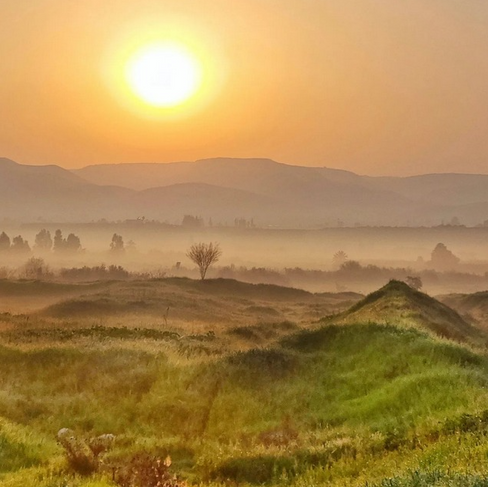Monday February 27, 2023
- Brian Convery
- Feb 27, 2023
- 3 min read
Good Morning Christian Soldiers marching in this war. We hope your personal fight is going well. For some it is not.
Gordon sent over the following comment: "There is no comment link to your last pic. Is the shorter crop in the foreground known as Tares/Darnel?"
Good catch from Sundays re-post of the picture. If you look at it in Sabbaths report you will notice in the center and at the bottom of the photo some very thin leaves growing in the lower right. Those are tares, actually the one which only grows to about half the size of wild barley. It acts like a ground cover to those who understand the term from your personal experiences. To the left of it and above it you see broader leaved plants which are darker in green than the tares/darnel are. That is young wild barley. Of course they are both dwarfed by the wheat and the spelt.
Please remember spelt is actually classified as a hulled wheat. Both are well into head development. In the next few days they will be forced to rush moisture to the developing kernels for them to produce starches due to the first real heat wave this growing year. Long overdue by patterns we might add.
So take a good look at that picture from Sabbath. Notice the disparity of it in age and stature with the wild barley. Now look at the first picture below. This is taken in the same area last March 19, 2022.
In it you see wheat in the flowering stages, but you also see wild barley towering over it in the same stage of Zadoks Scale. There are some who say this is irrelevant. Ask yourself why they would do such a thing? I can give you the answer but if you are honest with yourself and not engulfed in their scam you will easily come to a correct conclusion.
These are facts not fiction. That is why we keep detailed records. Maybe now some of you will understand why we have been focusing on the huge difference this year in the growing cycle of wheat as opposed to wild and domestic barley. It is breathtaking in its scope. It has turned a Biblical principle upside down and inside out for one reason: to get our attention. We wrote about it in yesterdays post so go back and refresh your memories, for repetition is a great teacher and memory builder.
Lets look at some pictures from this morning, there are 3 of them which speak, actually scream out to us of this very thing. The first demonstrates the age of the wheat, well into head development. The second and third of the 3 clearly show us the very young age of the wild barley (goat grass in this case) as opposed to the wheat. Also notice the advanced age of the wild oats. To overlook this is to be out of touch with the growing cycle patterns in the past of the Land.
But lets not leave it at these two grain growing regions, lets go to the bread basket of the NW Negev. This is what you will see all over it. Wheat well into the head stages and wild barley not even out of the boot adjacent to it. Domestic barley is on par with much of the wild.
Three witnesses folks! All saying the very same thing from around the country.
So where does this leave us? Exactly where we said it would in our methodology for determining the start of the year when not in the Land. That methodology tells us the Biblical new year will start on March 23 if the first crescent in the Land cooperates. Maybe we will revisit all of that this week. Now that I am thinking about it, are you all familiar with growing degree days? They are important to the growth rate of all green plants. Another short quiz. In the last picture here we have a wheat field growing in the Jezreel Valley. What are the growing degree days being influenced by here even though it is very warm in temperature?
Remember if you sent over a comment or answer do so with a preview or by email or we will not know what is being said. If someone can put together the process of growing degree day importance they want to share with others send it over by the method just mentioned.
When looking at this last picture go back to the 3 from the UJV and see the same effect taking place in growing degree days but by a different factor.
Our peace we give to you!















